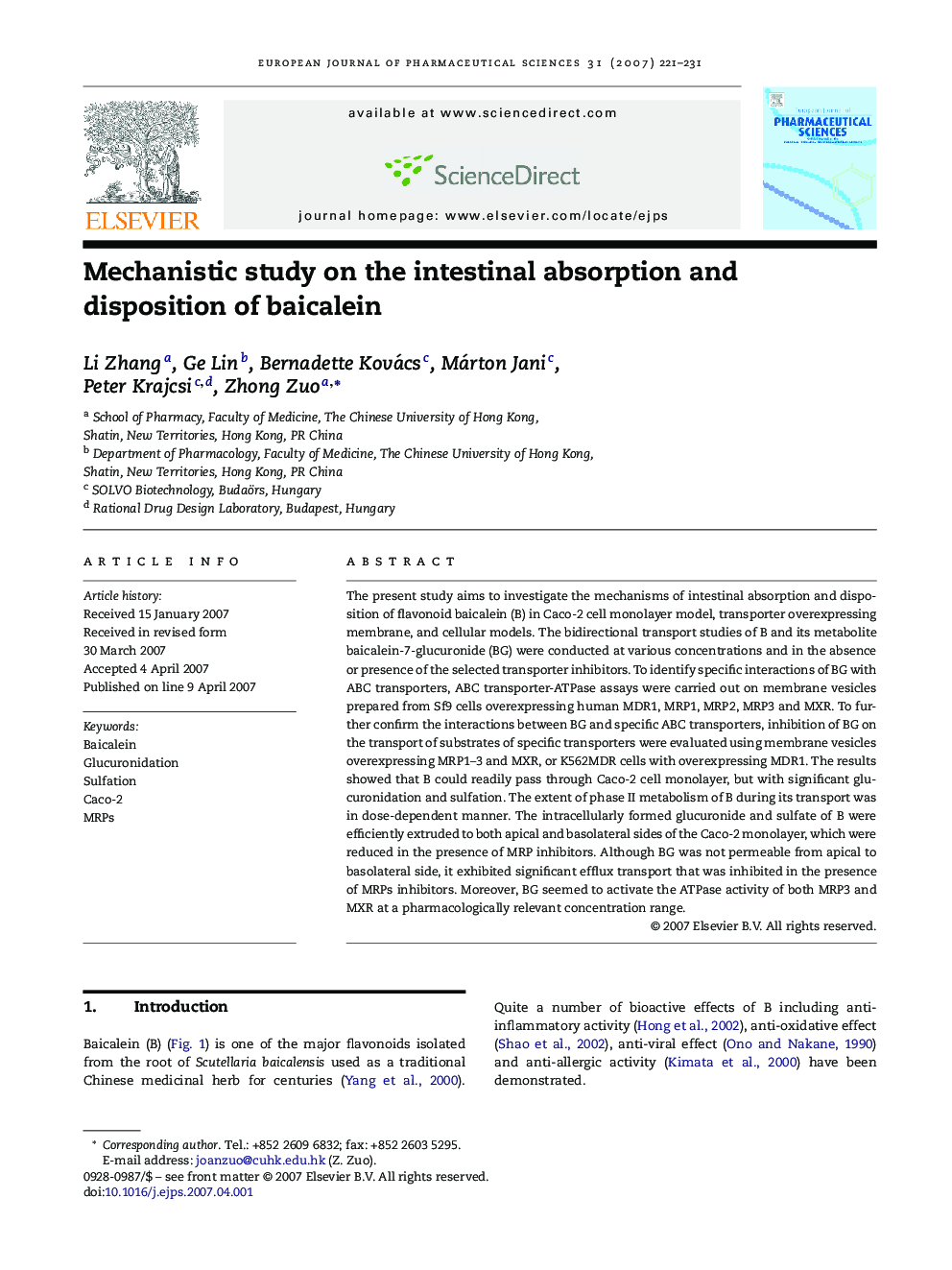| Article ID | Journal | Published Year | Pages | File Type |
|---|---|---|---|---|
| 2481860 | European Journal of Pharmaceutical Sciences | 2007 | 11 Pages |
The present study aims to investigate the mechanisms of intestinal absorption and disposition of flavonoid baicalein (B) in Caco-2 cell monolayer model, transporter overexpressing membrane, and cellular models. The bidirectional transport studies of B and its metabolite baicalein-7-glucuronide (BG) were conducted at various concentrations and in the absence or presence of the selected transporter inhibitors. To identify specific interactions of BG with ABC transporters, ABC transporter-ATPase assays were carried out on membrane vesicles prepared from Sf9 cells overexpressing human MDR1, MRP1, MRP2, MRP3 and MXR. To further confirm the interactions between BG and specific ABC transporters, inhibition of BG on the transport of substrates of specific transporters were evaluated using membrane vesicles overexpressing MRP1–3 and MXR, or K562MDR cells with overexpressing MDR1. The results showed that B could readily pass through Caco-2 cell monolayer, but with significant glucuronidation and sulfation. The extent of phase II metabolism of B during its transport was in dose-dependent manner. The intracellularly formed glucuronide and sulfate of B were efficiently extruded to both apical and basolateral sides of the Caco-2 monolayer, which were reduced in the presence of MRP inhibitors. Although BG was not permeable from apical to basolateral side, it exhibited significant efflux transport that was inhibited in the presence of MRPs inhibitors. Moreover, BG seemed to activate the ATPase activity of both MRP3 and MXR at a pharmacologically relevant concentration range.
